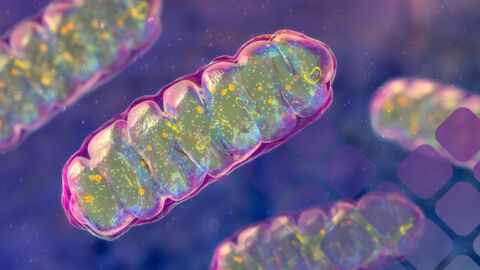High oxalates in the urine and plasma were first found in people who were susceptible to kidney stones. Many kidney stones are composed of calcium oxalate. Stones can range in size from the diameter of a grain of rice to the width of a golf ball. It is estimated that 10% of males may have kidney stones some time in their life. Because many kidney stones contain calcium, some people with kidney stones think they should avoid calcium supplements. However, the opposite is true.
When calcium is taken with foods that are high in oxalates, oxalic acid in the intestine combines with calcium to form insoluble calcium oxalate crystals that are eliminated in the stool. This form of oxalate cannot be absorbed into the body. When calcium is low in the diet, oxalic acid is soluble in the liquid portion of the contents of the intestine (called chyme) and is readily absorbed from the intestine into the bloodstream. If oxalic acid is very high in the blood being filtered by the kidney, it may combine with calcium to form crystals that may block urine flow and cause severe pain.
In addition to kidney disease, individuals with fibromyalgia and women with vulvar pain (vulvodynia) may suffer from the effects of excess oxalates. Oxalate crystals may also form in the bones, joints, blood vessels, lungs, thyroid, and even the brain, possibly impeding their proper function. In addition, oxalates in the bone may crowd out the bone marrow cells, leading to anemia and immunosuppression.
Oxalate crystals cause pain and damage to various tissues, due to their sharp, physical structure, and may also increase inflammation. Iron oxalate crystals may cause significant oxidative damage and diminish iron stores needed for red blood cell formation. Oxalates may also function as chelating agents and may chelate many toxic metals, such as mercury and lead. Unlike other chelating agents, oxalates trap heavy metals in the tissues, leading to metal toxicity. Oxalates also interfere with the Krebs cycle’s glucose metabolism and can inhibit absorption of essential minerals necessary for optimum health.
Foods especially high in oxalates are often foods thought to be otherwise healthy, including spinach, beets, chocolate, peanuts, wheat bran, tea, cashews, pecans, almonds, berries, and many others. People now frequently consume “green smoothies” in an effort to eat “clean” and get healthy, however, they may actually be sabotaging their health. The most common components of green smoothies are spinach, kale, Swiss chard, and arugula, all of which are loaded with oxalates. These smoothies also often contain berries or almonds, which have high amounts of oxalates as well. Oxalates are not found in meat or fish at significant concentrations. Daily adult oxalate intake is usually 80-120 mg/d. A single green smoothie with two cups of spinach contains about 1,500 mg of oxalate, a potentially lethal dose.
Oxalate Metabolism
Oxalate (and its acid form, oxalic acid), is an organic acid that is primarily derived from three sources: the diet, fungus (such as Aspergillus and Penicillium), possibly Candida, and also human metabolism. Oxalic acid is the most acidic organic acid in body fluids and is used commercially to remove rust from car radiators. Antifreeze (ethylene glycol) is toxic primarily because it is converted to oxalate in the body. Two different types of genetic diseases are known in which oxalates are high in the urine, hyperoxalurias type I and type II, which can also be determined from the Organic Acids Test.
In the genetic disease hyperoxaluria type I and in vitamin B-6 deficiency, there is a deficiency in the enzyme activity of alanine glyoxylate amino transferase (AGT), leading to the accumulation of glyoxylic acid. The high glyoxylic acid can then be converted to glycolate by the enzyme GRHPR or to oxalate by the enzyme LDH. Thus, glycolate, glyoxylate, and oxalate are the metabolites that are then elevated in the Organic Acids Test in hyperoxaluria type I and in vitamin B-6 deficiency.
In the genetic disease hyperoxaluria type II, there is a deficiency in an enzyme (GRHPR) that has two biochemical activities: glyoxylate reductase and hydroxypyruvic reductase. This enzyme converts glyoxylate to glycolate and glycerate to hydroxypyruvate. When this enzyme is deficient, glycerate cannot be converted to hydroxypyruvate and glyoxylate cannot be converted to glycolate. In this disease, glyoxylate is increasingly converted to oxalate and glycerate is also very elevated.
External sources of oxalates include ethylene glycol, the main component of antifreeze. Antifreeze is toxic mainly because of the oxalates formed from it. In addition, some foods also contain small amounts of ethylene glycol. Vitamin C (ascorbic acid or ascorbate) can be converted to oxalates but apparently the biochemical conversion system is saturated at low levels of vitamin C so that no additional oxalate is formed until very large doses (greater than 4 grams per day) are consumed. The deposition of oxalates in critical tissues such as brain and blood vessels, the oxidative damage caused by oxalate salts, and the deposition of oxalate mercury complexes in the tissues.
How can High Oxalate be Treated?
Implement a low-oxalate diet. This may be especially important if the individual has had Candida for long periods of time and there is high tissue oxalate buildup.
- Use antifungal drugs to reduce yeast and fungi that may be causing high oxalates. Children with Autism Spectrum Disorders frequently require years of antifungal treatment. Arabinose, a marker used for years for yeast/fungal overgrowth in the Organic Acids Test is correlated with high amounts of oxalates.
- Supplements of calcium and magnesium citrate can reduce oxalate absorption from the intestine. Citrate is the preferred calcium form to reduce oxalate because citrate also inhibits oxalate absorption from the intestinal tract.
- N-Acetyl glucosamine supplements can stimulate the production of the intercellular cement, hyaluronic acid, to reduce pain caused by oxalates.
- Chondroitin sulfate can prevent the formation of calcium oxalate crystals.
- Vitamin B6 is a cofactor for one of the enzymes that degrades oxalate in the body and has been shown to reduce oxalate production.
- Excessive fats in the diet may cause elevated oxalates if the fatty acids are poorly absorbed because of bile salt deficiency. If taurine is low, supplementation with taurine may help stimulate bile salt production (taurocholic acid), leading to better fatty acid absorption and diminished oxalate absorption.
- Probiotics may be very helpful in degrading oxalates in the intestine. Individuals with low amounts of oxalate-degrading bacteria are much more susceptible to kidney stones. Both Lactobacillus acidophilus and Bifidobacterium lactis have enzymes that degrade oxalates.
- Increase intake of essential omega-3 fatty acids, commonly found in fish oil and cod liver oil, which reduces oxalate problems. High amounts of the omega-6 fatty acid, arachidonic acid, are associated with increased oxalate problems. Meat from grain fed animals is high in arachidonic acid.
- Supplements of vitamin E, selenium, and arginine have been shown to reduce oxalate damage.
- Increase water intake to help eliminate oxalates.
High Oxalate Food List
Fruit
- Blackberries
- Blueberries
- Carambola
- Concord grapes
- Currents
- Dewberries
- Elderberries
- Figs
- Fruit cocktail
- Gooseberry
- Kiwis
- Lemon peel
- Orange peel
- Raspberries
- Rhubarb
- Canned strawberries
- Tangerines
Vegetables
- Beans (baked, green, dried, kidney)
- Beets
- Beet greens
- Carrots
- Celery
- Chicory
- Collards
- Dandelion greens
- Eggplant
- Escarole
- Kale
- Leeks
- Okra
- Olives
- Parsley
- Peppers (chili and green)
- Pokeweed
- Potatoes (baked, boiled, fried)
- Rutabaga
- Spinach
- Summer squash
- Sweet potato
- Swiss chard
- Zucchini
Fats, Nuts, Seeds
- Nuts
- Nut butters
- Sesame seeds
- Tahini
- Soy nuts
Drinks
- Dark or “robust” beer
- Black tea
- Chocolate milk
- Cocoa
- Instant coffee
- Hot chocolate
- Ovaltine
- Soy drinks
Dairy
- Chocolate milk
- Soy cheese
- Soy milk
- Soy yogurt
Starch
- Amaranth
- Buckwheat
- Cereal (bran or high fiber)
- Crisp bread (rye or wheat)
- Fruit cake
- Grits
- Pretzels
- Taro
- Wheat bran
- Wheat germ
- Whole wheat bread
- Whole wheat flour
Misc.
- Chocolate
Testing for Oxalates
The most convenient way of testing oxalates is by the Organic Acids Test (OAT) at Mosaic Diagnostics. The Organic Acids Test by Mosaic Diagnostics is the only OAT on the market that evaluates levels of oxalates in urine. The OAT checks for the presence of:
Oxalic acid (oxalates) Tests for all forms of oxalic acid and its salts or conjugate bases.
Arabinose Important Candida indicator which strongly correlates with oxalates.
Glycolic acid (glycolate) Indicator of genetic disease of oxalate metabolism called Hyperoxaluria type I due to a deficiency in the enzyme activity of alanine glyoxylate amino transferase (AGT).
Glyceric acid (glycerate) Indicator of genetic disease of oxalate metabolism called Hyperoxaluria type II due to a deficiency in an enzyme (GRHPR) that has two biochemical activities: glyoxylate reductase (GR) and hydroxypyruvic reductase (HPR).
Ascorbic acid (ascorbate, vitamin C) Indicates nutritional intake of vitamin C and/or excessive destruction. Vitamin C can be excessively converted to oxalates when free copper is very high. Evaluate further with Copper + Zinc Profile.
Pyridoxic acid Indicator of vitamin B-6 intake. The enzyme activity alanine glyoxylate amino transferase (AGT) requires vitamin B-6 to eliminate glyoxylic acid or glyoxylate, a major source of excess oxalates.
Furandicarboxylic acid, hydroxy-methylfuroic acid Markers for fungi such as Aspergillus infection, one of the proven sources of oxalates.
Bacteria markers A high amount of bacterial markers may indicate low values of beneficial bacteria such as Lactobacilli species that have the ability to destroy oxalates.







